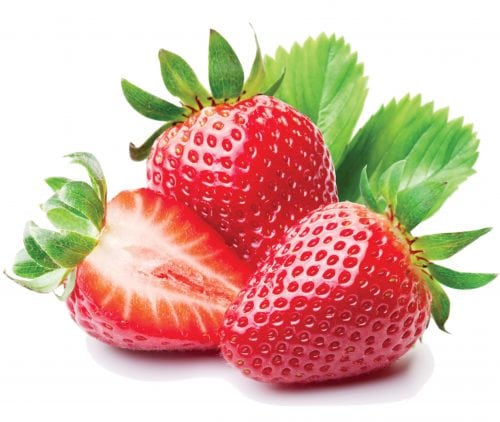
Strawberries
Choose strawberries that are unblemished and rich red as the fruit does not ripen further after being picked. Strawberries are rich in vitamin C.
Store
To store strawberries, place them on a paper towel in a sealed container for two to three days or when they’re plentiful, freeze in containers or sealed plastic bags for up to a year.
Use
Wash strawberries with the hull intact only when you’re ready to use them, not before, as rinsing can speed spoiling. Taken from the fridge, allow the fruit to reach room temperature for the best flavour.
Tips
- Serve sliced fresh fruit on breakfast cereal or add strawberries to fresh fruit salads.
- For a savoury salad, add strawberries to baby spinach with a few parmesan cheese shavings and a drizzle of balsamic vinegar.
- Not only does a drizzle of balsamic vinegar and a sprinkle of mint complement strawberries, so too does a sprinkle of black pepper.
Recipe idea
Parsley
Curly-leaf parsley is used more with fish in sauces and potato dishes. Traditional flat-leaf parsley (also called continental parsley or Italian parsley) has more flavour and is commonly used in Middle-Eastern dishes.
Parsley is a good source of vitamin A and vitamin C.
Store
Storing parsley can be as simple as keeping the herb plant alive in your garden or pot. Don’t let the soil dry out, allow for natural sunlight and plenty of room for the parsley to grow and pick regularly. Once picked, store stems upright in a jar of fresh water with leaves covered with a plastic bag. Store in the fridge or at room temperature.
Use
Parsley (like coriander) has a high moisture content which is why, when washed before use, leaves tend to stick together.
Tips
- Add parsley to dips, dressings, marinades, salads and soups to enhance flavour.
- Add fresh parsley to top pizzas for a touch of the Mediterranean.
- For a homemade parsley pesto, swap basil for parsley leaves.
Recipe idea
Chia, almond and herb-crusted fish
Courgettes
Courgettes (also known by their Italian name, zucchini) are actually an immature fruit which is more commonly used and prepared as a vegetable. Courgettes add useful amounts of vitamin A, potassium and fibre.
Store
While best eaten when fresh, courgettes can keep for some time in the fridge. Store in a plastic bag or in the crisper compartment in the fridge.
Use
Choose unblemished, firm courgettes. Smaller courgettes tend to be more flavoursome.
Tips
- Add raw thin slices to salads or make courgette batons.
- Dress with a simple lemon-juice vinaigrette, salt and pepper and top with crumbled feta.
- Grated courgettes can be added to muffin and loaf mixtures and used in place of grated carrot in carrot cake recipes.
Did you know? Mature courgettes are often called marrows. However, marrows are in fact a distinct summer vegetable, mottled and larger in size than its relative courgette, and always served cooked.
Recipe idea
www.healthyfood.com










